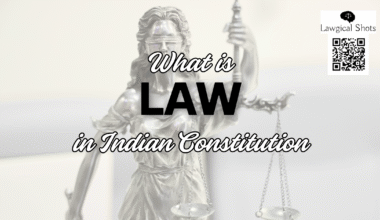At present, Common law and Civil law are two of the most influential legal systems worldwide and serve as the primary legal framework in nearly all nations. Around 150 countries follow a civil law legal system while roughly 80 countries follow common law. Although both systems are guided by the common goals of ensuring justice and regulating society, there are some important differences between each system, primarily their sources of law, structures, and operation. Hence, let’s try to understand what is the difference between common law and civil law.
Difference Between Civil Law and Common Law: A Preface
Common law takes judicial precedent into consideration and those past decisions will lend to judicial reasoning in future case rulings. Civil law, on the other hand, functions by referring to codified statutes and extensive legal codes that shall define citizens’ rights and responsibilities within a jurisdiction. The differences are also present when examining the processes of how the courts in both types of systems adopt and apply the respective laws. The eventually declared norms in both legal traditions were subjected to a nation’s political, cultural and historical context. Today, most countries and regions of the world derive their respective legal practices and philosophies from either the common law or civil law, their legal traditions representing an important awareness of law and justice globally.
WHAT IS CIVIL LAW?
Civil law is based on written codes and statutes that Judges read and enforce. Perhaps because it was a more structured approach with an emphasis on certainty of law, people know both what the law says and what is likely to happen.
It originates from Roman Law, built upon during the Napoleonic period in Europe, and has expanded worldwide.
Key Features of Civil Law
- Laws are conveyed with descriptive legal codes (of which there are civil, criminal, and commercial codes, for example).
- Prior decisions, or precedents, are not binding.
- Judges are responsible for enforcing the rules, and not for making rules.
- The civil law emphasizes stability and predictability.
- Legal decisions are based on abstract rules rather than specific facts.
- This system works best in cultures that embrace a structured legal system with few grey areas.
What Is Common Law?
Common law goes by a number of names, such as judge-made law or case law. This refers to the concept that Judges’ rulings in past cases can provide guidance for the determination of cases in the future. This concept is based on Stare Decisis, which translates to “to stand by that which has been decided”.
Example: Think about the Court’s five-year-old decision in a contract case. Unless there is an extremely convincing reason not to, the Court will often follow that same decision in a similar case in the future. This adds consistency and fairness into the legal system.
Common Law Features
- An important source of law is precedent, or earlier decisions.
- Judges provide interpretation of the law and development of the law.
- Law develops gradually as a result of cases; there is no single code.
- It is flexible and responsive to societal change.
- A court decision can create law even if it is not codified.
- This model is very advantageous when there are unique or novel situations where there might not be written laws.
Difference between Common Law and Civil Law
1. Historical Origins
Common Law:
Common Law originated in **England** during the Middle Ages. Following the Norman Conquest in 1066, several King’s Courts began to create a set of unified laws that applied to the whole realm. Eventually, Judges began applying legal principles derived from previous cases, and interpreting statutes, and therefore, created a body of case law over time. As a result, “precedent” became an important source of law in the Common Law system.
Civil Law:
The roots of civil law can be found in “Roman law,” or more precisely, in the “Corpus Juris Civilis” put together in the sixth century by Emperor Justinian. Again, later, in **Continental Europe**, it was systemized as a result of the German (German Civil Code) and French (Napoleonic Code) system. This system does not permit as much judicial lawmaking, and there is an emphasis on a comprehensive written code as the primary source of law in many Civil jurisdictions.
2. Primary Sources of Law
Common Law:
- Judicial decisions are the most significant source.
- Law is formed by “precedents” (also referred to as “stare decisis”), which obligates courts to abide by earlier decisions in future cases on similar facts.
- The statutory laws passed by Legislatures impact law too. However, laws are often interpreted by Court decisions.
Civil Law:
- A legal code, such as “Civil Code, Penal Code, or Commercial Code,” is the core of the legal system.
- Laws are directly applied by Judges without the influence of case laws/precedents.
- Legal reasoning focuses on interpreting written law and does not rely on analogies with prior judgments.
3. Judges’ Role
Common Law:
- Judges are “law-makers and adjudicators of the law”.
- Besides resolving the present dispute, the judges make law for the future in regard to similar disputes.
- Judges have even greater discretion to fill gaps in the law through interpretations a Judge makes, rather than making binding decisions.
Civil Law:
- Judges are focused on applying the written law.
- Judges play a more bureaucratic and investigative role in a Judicial manner (especially in criminal matters).
- Judges scarcely legislated in the past, and do not make laws now; they apply relevant sections of the code to specific facts.
4. Court Processes and Trials
Common Law:
- The system is “adversarial”.
- The Judge is more like a neutral referee between two adverse parties.
- The lawyers are responsible for the presentation of evidence and arguments.
Civil Law:
- The system is generally judicial.
- Judges lead the inquiry and are actively involved in fact-finding.
- The lawyers need not investigate facts, and instead focus on the legal issues.
5. Precedent Reliance
Common Law:
- Precedent is binding.
- Any court must follow a previous decision made by a higher court, as long as the facts/legal application is similar enough.
- The precedents keep the law changing at a slow pace, but with predictability and consistency.
Civil Law:
- Previous decisions can be persuasive, but not binding.
- Judges are more likely to use logical reasoning of statutes in a published document than to follow a previous decision.
- To make changes to an existing law, it remains to the will of the Legislature.
6. Global Reach and Distribution
Common Law Countries:
- United Kingdom
- United States
- Canada
- India
- Australia
- South Africa (mixed)
- Nigeria
Civil law countries
- France
- Germany
- Japan
- China
- Russia
- Brazil
- Mexico
- Most of the Europe and Latin America
7. Legal Education and Practice
In common law systems:
- Legal education focuses on reading rulings, comprehension of judicial reasoning, and reliance on the published case law binding attorneys on persuasive status.
- Attorneys are taught to rely on precedent as a tool to maintain their position.
- The real-world results of rulings fundamentally cause the law to evolve in a gradual manner.
In civil law systems:
- Legal education focuses on legal codes and doctrine.
- It emphasizes more on utilizing logical reasoning of written laws, rather than the findings of the courts.
- Law is understood as a closed system that depends on rational and abstract principles.
8. Pros and Cons
1. Common Law
- Benefits
- Flexible
- Develops with society
- Drawbacks
- Potential inconsistency
- Uncertainty because it is always based on cases
2. Civil Law
- Benefits
- Clear and predictable rules
- Written and codified
- Drawbacks
- Less flexible
- Difficult to adapt and get around to new scenarios
CONCLUSION
The difference between common law and civil law reflects that there are two different but equally effective pathways to get to justice (common law and civil law). Common law provides flexibility and adaptability based on judicial precedents; while civil law favors clarity and predictability based on written codes.
Each system has its own unique advantage of practical application based on a nation’s history, culture, and legal requirements. Most modern countries utilize aspects of both systems and have developed hybrid systems. A working knowledge of both the domestic and international law systems necessitates an understanding of these legal traditions.
The difference between civil law and common law has been elaborated by our intern, Ms jai Shree. She has been assisting the team in bringing informational legal blogs.








